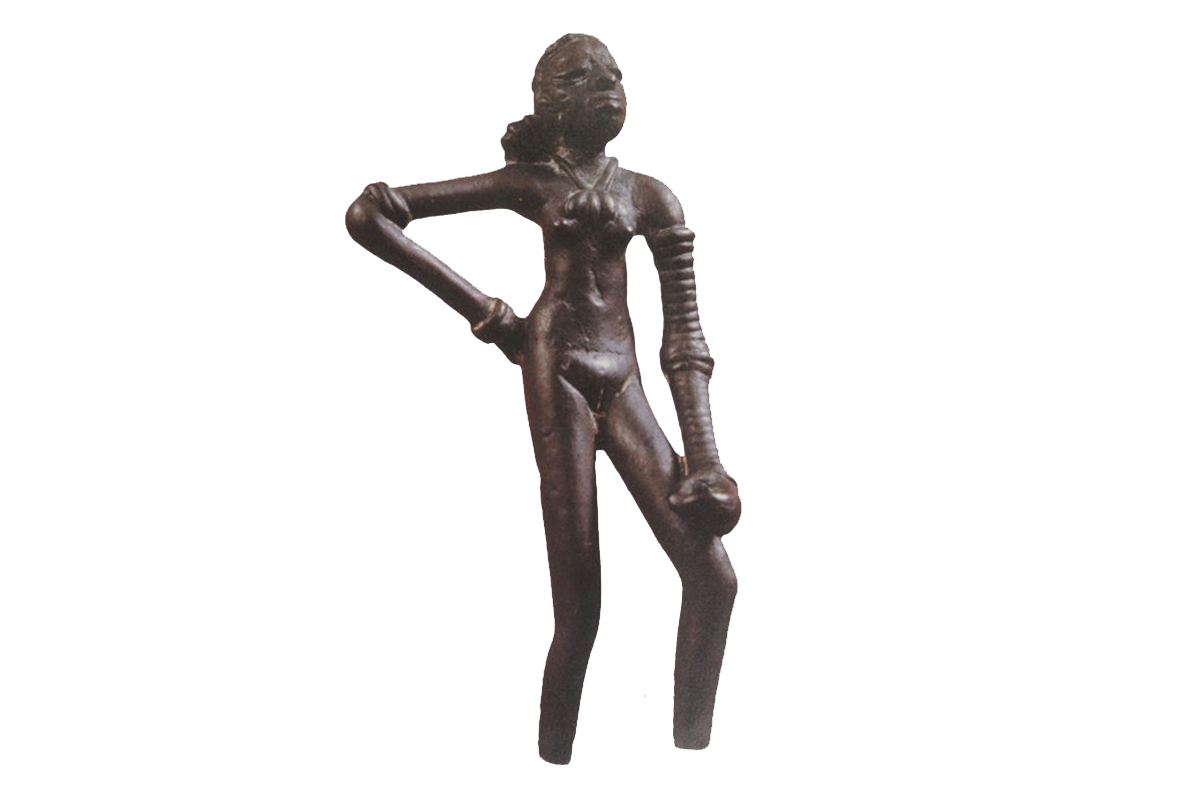The Earliest Evidence of Lost-wax Casting
3000–2300 BCE
A set of copper amulets found in Mehrgarh (in present-day Balochistan, Pakistan), dated to 3000 BCE, are believed to be the earliest evidence of lost-wax metal casting in South Asia, and possibly the world. Bronze statuettes, most notably the Dancing Girl from Mohenjo-daro (in present-day Sindh, Pakistan) dated to 2500–1750 BCE, constitute the earliest known bronze sculptures made using this method.
Bibliography
Davey, C. J. “The Early History of Lost-Wax Casting.” In Metallurgy and Civilisation: Eurasia and Beyond, edited by J. Mei and T. Rehren. London: Archetype Publications, 2009.
Kaplan, Sarah. “This 6,000-Year-Old Amulet Is the Oldest Example of a Technology Still Used by Nasa.” The Washington Post, November 15, 2016. Accessed September 25, 2023. https://www.washingtonpost.com/news/speaking-of-science/wp/2016/11/15/this-6000-year-old-amulet-is-the-oldest-example-of-a-technology-still-used-by-nasa/.
Davey, C. J. “The Early History of Lost-Wax Casting.” In Metallurgy and Civilisation: Eurasia and Beyond , edited by J. Mei and T. Rehren. London: Archetype, 2009.
Kaplan, Sarah. “This 6,000-Year-Old Amulet is The Oldest Example of a Technology Still Used by Nasa.” The Washington Post , November 15, 2016. Accessed September 25, 2023. https://www.washingtonpost.com/news/speaking-of-science/wp/2016/11/15/this-6000-year-old-amulet-is-the-oldest-example-of-a-technology-still-used-by-nasa/ .
Feedback 
This entry appears in
Art in South Asia
Visit Timeline
Associated Timeline Events
First Published: March 11, 2024
Last Updated: July 2, 2024






